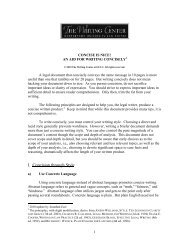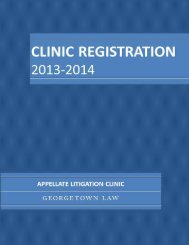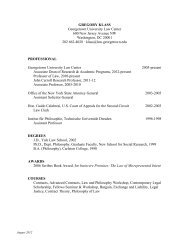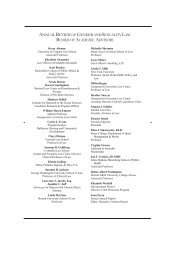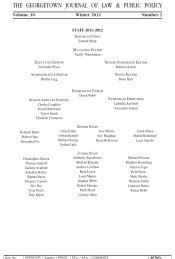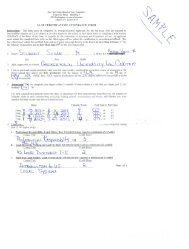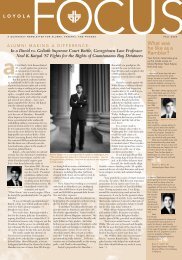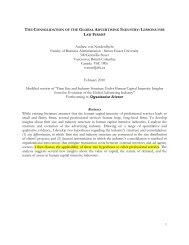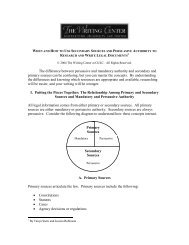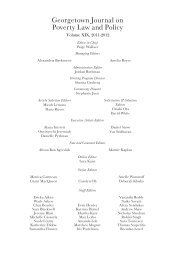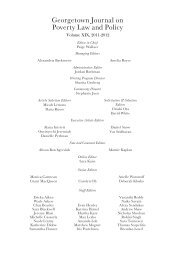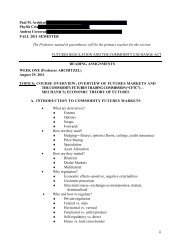Date: April 12, 2013 Topic: The Shrinking ... - Georgetown Law
Date: April 12, 2013 Topic: The Shrinking ... - Georgetown Law
Date: April 12, 2013 Topic: The Shrinking ... - Georgetown Law
Create successful ePaper yourself
Turn your PDF publications into a flip-book with our unique Google optimized e-Paper software.
of sample means indicate more in-house lawyers when GCs are on the TMT. This difference<br />
is significant at the 5% level.<br />
- Insert Figures 1A-E about here -<br />
Regression analysis<br />
Table 3 presents the results of our regression analysis. Models 1-2 present fixedeffects<br />
specifications while Models 3-5 present results from the system GMM estimator.<br />
Simpler fixed-effects models suggest that the lagged dependent variable, In-house lawyers it-1 ,<br />
explains roughly 30% of variation in the dependent variable. We noted previously, however,<br />
that the lagged dependent variable coefficient estimates in fixed-effects regressions are<br />
typically biased downwards (Nickell, 1981). When the number of time-periods, t, are few as<br />
here, the downward bias can be substantial as corrected system GMM regression results<br />
demonstrate. Coefficients on In-house lawyers it-1 jump from 0.310 and 0.305 in Models 1-2<br />
to 0.973, 0.882 and 0.883 in Models 3-5. All estimates are significant at the 1% level.<br />
Model 3 reports one-step system GMM results with the lagged dependent variable<br />
and controls only. Models 4-5 are fully-specified and report one- and two-step system GMM<br />
results (the two-step estimator is corrected for downward bias in the computed standard<br />
errors (Windmeijer, 2005)). Diagnostics at the bottom of each column suggest that key<br />
estimation assumptions hold. <strong>The</strong> Arellano-Bond z test for second- and higher-order autocorrelation<br />
is not statistically significant. This is not weakened by the number of instruments<br />
as instrument count is lower than the number of firms (Roodman, 2006). Hansen’s J test, a<br />
variant of the Sargan test of overidentifying restrictions, fails to reject the null hypothesis that<br />
the instruments generated are exogenous. Taken together, these results confirm the<br />
appropriateness of our system GMM strategy as a response to possible bias in estimation<br />
related to the endogenous and/or predetermined nature of certain regressors.<br />
- Insert Table 3 about here -<br />
23



